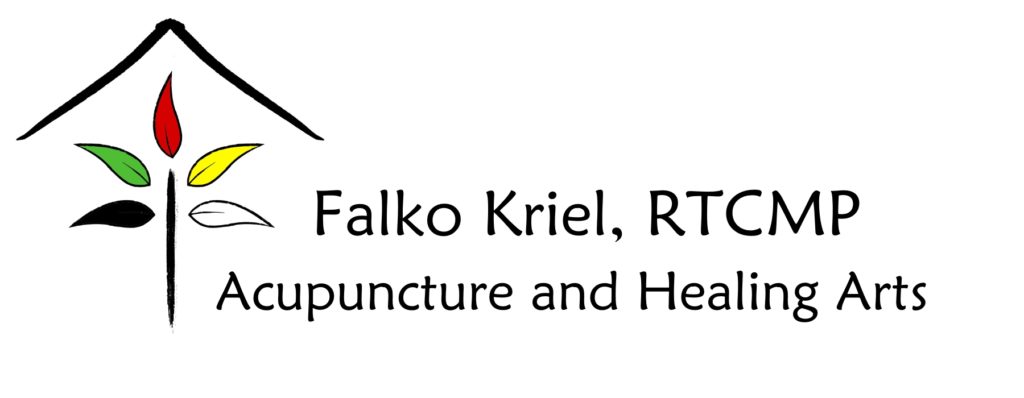Low back pain, and back pain in general, is one of the most common conditions that people seek medical care for. In an acupuncturist’s office, it is no different. I can’t help but be surprised when people ask me if I treat low back pain, because it’s rare that a day goes by in my practice that I’m not seeing at least one case where it is the chief complaint. Even when it isn’t the most pressing concern, a startling number of people live against a background state of dull, chronic pain that they eventually learn to tune out and accept. The question, “does acupuncture help low back pain?”, shows we are starting to learn more about Eastern medicine but have a long way to go. The evidence, both through experience and clinical trials, shows acupuncture is a safe and effective treatment for numerous causes of back pain, and in some cases can be the most effective therapy. More medical doctors are beginning to recommend and prescribe acupuncture, and it is on the way to becoming part of the standard practices of care for back pain.
When should someone seek out acupuncture for back pain? The short answer is anytime there is pain! Acupuncture can treat a wide variety of soft tissue injuries in a similar way to massage therapy, relieving tension and promoting circulation and healing. When the problem is coming from the spine or surrounding structures, acupuncture can still be effective. Aside from merely treating the muscles, acupuncture can produce structural changes over time and provide favorable outcomes for many orthopedic conditions involving degeneration or trauma to the body. Acupuncture has been shown to reduce inflammation in an area of pain as well as having an overall analgesic or pain-relieving effect on the central nervous system, bringing a drug-free option to pain management free from side effects and addictive potential. Beyond treating symptoms alone, acupuncture and Chinese medicine will support the body’s overall health and lead to better outcomes by promoting constitutional strength and proper regulation of internal bodily systems.
The conditions that acupuncture is most effective for include low back pain due to muscle tension, spasms, injury, tears, or dysfunction (such as piriformis syndrome), lumbago, degenerative disc disease, lumbar disc herniations (bulging disc), spondylosis, radicular neuropathy, sacroiliac joint pain, sciatica, and mild cases of spinal stenosis. Many symptoms resembling sciatic nerve pain can come from sources other than the sciatic nerve itself, such as strain in the glutes or other muscles of the lower back, which can be effectively relieved by acupuncture. In cases of moderate to severe spinal stenosis, in which a narrowing of the spinal canal compresses the nerve roots, acupuncture cannot treat the condition itself but can help manage symptoms and improve quality of life.
I have personally seen both ends of the spectrum of what acupuncture can treat. On the one side, a patient who can barely walk into the office with debilitating pain has walked out nearly pain free after a single treatment. This primarily happens with pathologies related to muscle spasms. In opposition to this is the patient who comes for numerous treatments but fails to obtain adequate relief and eventually goes on to require surgery. The reality is usually somewhere in the middle: a solid treatment plan and skilled practitioner can make lasting and profound changes. The key as a professional health practitioner is a proper diagnosis of the cause of pain, whether it is back pain or in any other part of the body. As acupuncturists, we have training to identify what is in the scope of our practice and the red flags that mark when to refer out to the appropriate healthcare professional.
For low back pain and any pathology relating to the spine, the two main medical treatments available from physicians are medication to manage symptoms and surgery. In general, physicians will refer patients out for physiotherapy, massage, chiropractic care, and acupuncture. The number of instances when surgery is required are in fact very small. There are significant risks associated with surgery around the spine, and success rates depend highly on the pathology, patient’s health, and surgeon’s skill. For those reasons, it is generally advised that patients exhaust all other treatment options first. Medications pose their own dilemma in healthcare. While alleviating symptoms, they do not address the root cause of the pain and often become habit forming or come with harmful side effects. The process of inflammation and pain are powerful signals the body uses to communicate information to us about our state of health, and by overly suppressing them we may be missing critical pieces of information that can lead us to changes in lifestyle. When possible, medication use should be as short as possible for acute conditions, and chronic conditions should be addressed with a range of therapeutic modalities to bring transformative change and treat the structural or behavioral cause of our pain.
When surgery is required, acupuncture is still an essential part of post-operative care. By incorporating acupuncture and other Chinese medicine modalities into the rehabilitative plan, we can reduce the number of surgeries needed and as a result increase positive patient outcomes enormously. This effect is increased dramatically when patients engage with their own health by following therapeutic exercise programs and by intervening early when a problem has begun. Neglect or improper treatment of the body over years will accelerate degeneration and make the ensuing conditions more resistant to treatment. A dull ache is often more dangerous than excruciating pain because we often ignore what our body is signalling to us until it flares up dramatically, after which point degenerative chances can have occurred already.
One of the unique things acupuncture brings to the medical landscape is a holistic perspective that has explored and mapped interconnections throughout the body for thousands of years. The relationship to our posture and our pain has been written about extensively and can be found in many places, so I will skip over that aspect of low back pain here. Keeping correct postural alignment and muscle balance is the most important first step to both treating and preventing pain and is best done with some coaching from an athletic instructor or health practitioner who is qualified to give you specific guidance. However, there are other important factors that can lead to low back pain.
In acupuncture, we map out meridians through the body that form pathways for the flow of information, energy, and bodily substances. Following these channels, we find connections between emotions and internal organ systems with more external muscle tissue. Treatments integrate a wide variety of modalities from acupuncture to herbal medicine, food therapy, and Qi Gong or Tai Chi, which areboth systems of therapeutic exercise. Chinese medicine bodywork can also include manual therapy (tuina), guashia (friction), cupping, and moxibustion (heat therapy).
The majority of cases of low back pain in ancient times were thought to be caused by an external invasion of what we call wind-dampness often manifesting as what practitioners refer to as heat or cold patterns. In modern terms, wind-dampness can signify swelling in the body, pain, inflammation if related to heat, and immobility if related to cold. It should be noted that the presence of chemical inflammatory markers can be present in both heat and cold syndromes as Chinese medicine understands them, and these terms are to be applied from the lens of a Chinese medicine understanding of the body to truly be relevant in treatment.
The descriptive language used in Chinese medicine helps us to best treat the pain by using acupuncture points and herbs most suited to how it is being manifested. The clinical effectiveness of turmeric is being acknowledged in a widespread way for treating pain, but often it is only used as a single herb and will only be truly effective for cases relating more to cold as it is a warming herb. By contrast, peppermint oil or menthol is also often used and will be more effective for conditions relating to heat as it is cooling to the body.A Chinese medicine practitioner will be able to better recognize which types of treatment approach is correct and uses herbal formulas that integrate multiple herbs for individual presentations that meet the unique needs of each patient.
Aside from orthopedic causes, there are other pathologies recognized by Chinese medicine for low back pain. The kidneys and adrenal glands are situated in the low back, and not far away are the reproductive system and lower digestive tract. There is also a branch of a meridian that connects strongly to emotions that connects to the low back. These relationships allow us to see different clinically relevant patterns that are recognized by Chinese medicine and treated accordingly.
In the first pattern, a systemic weakness of the constitution due to chronic overwork or debilitation from disease will have negative impacts on the kidneys and adrenal glands. What Chinese medicine practitioners refer to as Kidney energy deficiency is often closely related to what some may call adrenal fatigue or burnout. This is often manifested in clinic as a slowly progressing dull ache, and over time is related to degeneration of bone, joints, and interstitial fluid. It also accompanies other systemic systems such as fluid retention, fatigue, and adrenal hormone dysfunction. Treatments in this case would incorporate herbal medicine, dietary changes, and exercises aimed at restoring and promoting the energy and nourishment of the body.
A second pattern is what we would call blood stasis in the lower burner, taken to be the lower portion of our torso. We usually see this in patterns related to women’s reproductive health, such as uterine fibroids, endometriosis, or painful periods that involve some form of blood and body fluid gathering in a painful way that the body is failing to properly transform and regulate. This is often accompanied by inflammatory changes and radiates to the low back. In this case, the low back pain is secondary and will subside when the blockages in the reproductive system are removed. A completely different prescription of herbs, food, and acupuncture points would be used in this case to treat the pain.
The third pattern relates to emotional stress, which is more commonly associated with neck and shoulder tension but can also affect the low back. These patients tend to have abrupt, painful spasms that seem to come randomlyand are worse in periods of heightened tension and intensity. While orthopedic therapies will help with the muscle tension, they often require a gentler approach to relax the sympathetic nervous system and allow overly reactive muscles to come to rest. Something as simple as deep breathing can have enormous benefits, as can changing work schedules to allow for more relaxation and recreation for those that have overly hectic daily lives. Work with a counselor or relationship coaching may even be needed before a full recovery can be made.
Within each of these basic patterns are nuances that a trained acupuncturist has studied years to understand. It is advised not to try to self-identify patterns but to seek professional help. In the case of internal medicine pathologies, acupuncturists will refer to medical doctors for the appropriate testing if an issue is suspected beyond simple low back pain. When we need the landscape of the body to change over time, it is best to find a gardener, being the acupuncturist who looks at systems in terms of how they are functioning and relating to one another. When we need to discover what specific components of the body need repair or made sudden drastic changes, it is best to find a mechanic, being the medical doctor who can scan the body on a microscopic level and literally take it apart and put it back together again. Ultimately, by working together our two divergent systems can be integrated to bring the best results for patients, each seeing the body in a unique but complimentary way.
For those interested in experiencing this yourself please book an appointment AT THIS LINK . I look forward to meeting you!
– Falko





